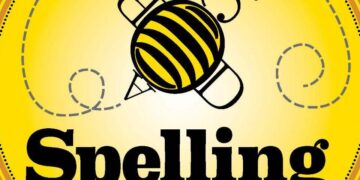ByNational Geographic Staff
Published September 25, 2023
• 6 min read
Chamomile tea to ease cramps and restlessness. Aloe to heal burns. Rue to ward off mal de ojo—the evil eye.
Those are just some of the herbal secrets author Mimi Prunella Hernandez learned from her Mexican abuelita as she watched her grandmother lovingly gather weeds and pluck leaves for home remedies to treat common ailments. Later, Hernandez pulled from her maternal Colombian roots to dive deeper into the world of herbalism—accumulating years of knowledge now shared in the upcoming book, National Geographic Herbal: 100 Herbs From the World’s Healing Traditions.
“My bioregional lens as an herbalist of 27 years focuses on plants of the eastern United States, while my cultural perspective is steeped in Latin American folk herbalism,” writes Hernandez, who also is the executive director of the American Herbalists Guild. “My clinical training is rooted in Western herbalism with a pinch of Ayurveda. I draw from my own unique tapestry—my heritage, upbringing, scholarly pursuits, and clinical experience—joined with sound, evidence-based information balancing science, tradition, and intuition.
“Herbalism has shown me that even through the darkest grief,” she continues, “I can find solace in the plants.”
Here are half a dozen herbs and their therapeutic uses:
Andrographis
Crowned the “king of bitters,” this herb originates from the forests and hillsides of India and Sri Lanka. Andrographis is revered for its potential immunity-enhancing properties and is often suggested at the first sign of a potential viral or bacterial infection. This potent herb is rich in flavonoid compounds, which may help in easing allergies and alleviating congestion. Andrographis may also promote heart health by relaxing the blood vessels, lowering blood pressure, and preventing clots.
Cayenne
This spicy red chili pepper offers a medicinal kick. One bite can make your senses dance a cha-cha. The aftereffects of streaming tears, running nose, drooling mouth, and spiked adrenaline can even boost heart rate and raise metabolism. Herbalists use chili peppers in countless ways, including for kitchen first aid. Not only can a dusting of cayenne powder help curb bleeding from small cuts, but it also serves as a potent numbing antiseptic. A topical poultice of raw chili pepper or a liniment of cayenne-infused vinegar rubbed into achy joints or slow-healing ulcers can elicit a rush of invigorating blood flow, known as rubefacient activity. In addition, cayenne is an antioxidant powerhouse that nourishes the cardiovascular system.
Goldenrod
A common wildflower that thrives across North America, this perennial helps allay seasonal irritations. While goldenrod’s showy blooms often take the blame for seasonal allergies caused by ragweed, this plant can actually help clear up the runny, weepy, or watery symptoms associated with all kinds of allergic reactions. Taken as a tonic over time, goldenrod can remarkably boost resistance to allergens by strengthening the integrity of leaky mucus membranes. The gentle astringency of a tea or tincture made from the flowering tops dries up the drippiness of colds and flu, while also eliciting a gentle sweat that can cool down a fever.
Jewelweed
Submerged in water, this herb’s bluish-green oval leaves shine with an iridescence reminiscent of fine silver. This jewel of North American forests is also known as spotted touch-me-not, for its characteristic dotted orange flowers and projectile seeds. It grows in dense patches along ditches, streams, fence lines, moist fields, and forest edges. In many rural parts of the United States, jewelweed is well known for its healing virtues. The succulent stems in particular are full of soothing mucilage that can offer cooling relief from itching and burning associated with such skin irritations such as bug bites, burns, and rashes. Jewelweed is also thought to actually neutralize the toxins in poison ivy just as they are exposed to the skin, so it can be used as a preemptive cleansing agent. Many hikers and outdoor enthusiasts have learned to trust this method of rash prevention.
Plantain
The herb plantain (unrelated to the banana-like fruit of the same name) boasts a presence on all inhabited continents and may even be growing as a weed in your backyard. A resilient lover of disturbed soil sites, it’s found popping up in sidewalk cracks, along trail edges, in open fields, and on sunny creek sides. Plantain enjoys a reputation as the original “green bandage” due to its first aid application for minor skin irritations, cuts, and scrapes. Touting the complementary qualities of tightening astringency and soothing mucilage, plantain seals abrasions while calming and cooling inflammation such as hemorrhoids and rashes.
Lemon balm
The herbalist’s heart revels in pure joy at the delightfully uplifting fragrance of lemon balm. This plant plays a beneficial role in the garden, summoning bees and pollinators while warding off gnats and mosquitoes. Lemon balm, also called heart’s delight, is said to bring merriment to those who use it. It is especially sought out by herbalists as an uplifting antidepressant to shine light on the winter blues. A tea or tincture of lemon balm can be taken any time of the year upon waking to fend off morning doldrums and soften anxiety. Lemon balm allays stress and quiets mental chatter, so it can also be taken at night to promote restful sleep. A glycerin extract of lemon balm conveniently placed on the nightstand can help both young and old recover from dark dreams when consumed in the wake of a nightmare.
This material was excerpted and adapted from National Geographic Herbal: 100 Herbs From the World’s Healing Traditions. The authoritative guide offers crucial information for the health-minded consumer, wellness advocate, gardener, and naturalist.
>>> Read full article>>>
Copyright for syndicated content belongs to the linked Source : National Geographic – https://www.nationalgeographic.com/premium/article/herbs-remedies-book-national-geographic-herbal-100-herbs-worlds-healing-traditions














![[News] China Makes Breakthrough in Chip Technology, Paving the Way for Lithography Advancements – TrendForce](https://earth-news.info/wp-content/uploads/2025/11/324664-news-china-makes-breakthrough-in-chip-technology-paving-the-way-for-lithography-advancements-trendforce-360x180.jpg)















